Wikipedia:Wikipedia Signpost/Single/2011-10-17
Arabic Wikipedia gets video intros, Smithsonian gifts images, and WikiProject Conservatism scrutinized
Why Wikipedia survives while others haven't; Wikipedia as an emerging social model; Jimbo speaks out
Brazil's boom-time dreams of naval power: The ed17 explains the background to a new featured topic
Arabic Wikipedia gets video intros, Smithsonian gifts images, and WikiProject Conservatism scrutinized
Introductory videos to encourage Arabic Wikipedia contributions

The national program for digital content in Saudia Arabia, which was initiated by KACST, a Saudi scientific institution, produced three short videos covering an introduction to Arabic Wikipedia, how to edit an article, and how to create a new article, at lengths of 2:58, 5:03, and 3:36 minutes, respectively.
The videos, directed by Alaa Maktoum and Fuad Al-Hatlan, were produced with attractive graphics effects along with narration in Arabic, with the aim of encouraging more contributions to the Arabic Wikipedia. Arabic has hundreds of millions of native speakers and spans more than a dozen countries, underscoring the importance of this Wikimedia Foundation project.
The videos have been advertised on the top banner of the Arabic Wikipedia for the past two weeks, and have attracted more than 60,000 viewers on YouTube. The three videos were also uploaded on Commons, and are planned to be included within the welcome message for new registered users.
Smithsonian Institution's first donation to Commons
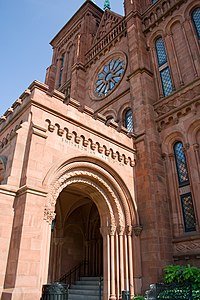
In a press release, the Smithsonian Institution announced that the Archives of American Art has contributed 285 digitized photographs from the Federal Art Project’s Photographic Division collection to Wikimedia Commons. Most of the pictures are from 1935 to 1942, the active years of the Federal Art Project.
While the Archives have been previously made available on its website, the release notes that: "this is the first time that high-resolution scans have been made available for unrestricted use by the public". Liza Kirwin, acting director of the Archives said, "By placing these images in the Wikimedia Commons we hope to foster online learning and discovery and to promote an open exchange of ideas about the history of American art. We are delighted to be the Smithsonian’s first contributor to Wikimedia."
The donation comes in the wake of a residence at the Archives during the summer of 2011 by Wikipedian Sarah Stierch (see Signpost coverage), who expressed her hope that this will be "the first of many from the Smithsonian.”
WikiProject Conservatism comes under fire
In the first MfD of its kind, an active WikiProject was nominated for deletion last week. The debate, the largest in bytes since the deletion of a user's cache of evidence against others two months ago, has just been closed as "keep".
The nomination cited problems of scope as the justification for deletion, arguing that 'the terms "conservative" and "conservatism" have been used to describe people and concepts which have flip-flopped over time between liberal and conservative'; however, concerns over bias soon surfaced and appear to be at the root of the deletion request. The WikiProject publishes a newsletter by the name of "The Right Stuff", and some of the project's members indicated a desire to counter liberal bias in Wikipedia. One editor wrote on the signup page that he was joining for the purpose of "enlightening conservative people & topics in a world darkening with liberalism".
WikiProject Conservatism is one of a number of WikiProjects covering specific ideologies, where most of the people interested enough to join will be of that persuasion; one member of WikiProject Socialism signed up because they were "interested in spreading awareness", WikiProject Feminism is listed as a step forward for feminism on the Internet by the Geek Feminism Wiki and one of the official userboxes of WikiProject Atheism features the Invisible Pink Unicorn, a satire of theist beliefs.
In the end, the project was overwhelmingly kept, with most of the keep votes addressing the first reason for deletion. It was pointed out other WikiProjects with similarly broad scopes are functioning, such as WikiProject Medicine. The issue of bias was mostly sidestepped with the critics of the WikiProject being directed to dispute resolution processes. Some had already tried such avenues, though; a request for arbitration had been submitted the day before the MfD but was declined by a significant margin; arbitrator Newyorkbrad declared "obvious decline, as there's no evidence of any attempt at prior dispute resolution of any nature. In fact, there's no evidence of a specific dispute, defined as one user telling another that he or she disagrees with something, even existing."
It is unclear whether the dispute is over, but Lionelt, the project's founder, will continue to stand in its adamant defense, offering on the project's talkpage a toast to its members for their perseverance, prefaced by a public address:
I would like to express my appreciation and gratitude to the Community for their support of this amazing and special group of editors. The attempt to delete the project has been soundly and decisively defeated. The consensus is that the members have accorded themselves with honor and integrity according to Wikipedia policies. The consensus is that charges of activism, advocacy, and vote-stacking are baseless and without merit. The future of this project is secure. It has been said that whatever doesn't kill you makes you stronger. This assault on the project will indeed strengthen us. I urge every member to rededicate themselves to collaboratively working together to improve conservatism-related articles.
Strident discussion of the meaning of the MfD and the future direction of the project continues on the talkpage.
In brief

- WMF September report published: The latest report contains highlights on the Public Policy Initiative and Global Education Program.
- Wikipedia and medicine workshop: Wikimedia Canada, as part of the Global Education Program and in collaboration with the Medical Education Unit of University College of Medical Sciences of India, will hold a half-day workshop to discuss the significance of Wikipedia in medicine. The workshop will take place in New Delhi on 1 November.
- WikipediaWeekly revived: The Signpost is pleased to welcome the long-awaited return of the Wikipedia Weekly to the Wikipedia mediasphere with their 89th episode, described as "our first non-Wikimania roundtable podcast for two years" and devoted to this month's strike of the Italian Wikipedia (see Signpost coverage). Sadly, the podcast's website appears down at the time of writing (update: available now, via archive.org, see link here.), and irreverent sister project Not The Wikipedia Weekly has been off the airwaves since its 51st episode in March 2009.
- Ada Lovelace Award unveiled: WikiProject Women's History have adopted the Ada Lovelace Award for recognising contributions to content relating to women and technology. The award incorporates an image (see right) of British technologist Ada Lovelace that was donated by the Ada Initiative, a non-profit of congruent goals to the WikiProject.
- Milestones: The Kazakh and Belarusian/Taraškievica Wikipedia projects reached milestones recently, with 80,000 and 40,000 articles respectively. Mediawiki meanwhile passed 100,000 code commits.
- New administrators: The Signpost welcomes our latest addition to the ranks of administrators, Redrose64, whose request closed successfully last Friday. A contributor most notably of content related to British rail, Redrose64 has indicated their intent to focus on working with protected templates and the deletion processes as a sysop. At the time of writing, the open request of Swarm looks likely to succeed, with a ratio of 96:1 supportive to opposing comments.
Reader comments
Why Wikipedia survives while others haven't; Wikipedia as an emerging social model; Jimbo speaks out
The little online encyclopaedia that could

In a speech to the Berkman Center for Internet and Society, Wikimedia Foundation Advisory Board member Benjamin Mako Hill (userpage) outlined the preliminary results of his research into why Wikipedia ultimately thrived where seven pre-existing online encyclopaedias foundered; Interpedia, (1993–94); The Distributed Encyclopedia (1997–98); Everything2 (1998–present); h2g2 (1999–present); The Info Network (2000–03); Nupedia (2000–03); and GNUpedia (founded in 2001, later incorporated into Nupedia).
Covering the event for the Nieman Journalism Lab (reprinted in Business Insider), Megan Garber summarises how Hill, a PhD candidate at MIT, interviewed project founders and trawled archival data in an attempt to form hypotheses which would explain why this one project succeeded in attaining critical mass while the others failed. This methodology of using "failure cases" to understand the rise of successful collective action projects is a larger concern of the researcher; a subsequent project will test the hypotheses using quantitative database analysis.
While all examples he looked at shared a similar collaborative ethos, the critical factor Hill identified in Wikipedia's relative success was that it alone attracted masses of contributors. He attributed this in part to Wikipedia's self-characterisation as an encyclopaedia, which provided a model of a resource that was easily understandable by potential contributors, many of whom were highly literate infovores raised on an educational diet of Encyclopaedia Britannica and World Book Encyclopedia. Not only were traditional encyclopaedias a familiar end-product; they were an "epistemic frame", a way of systematically conceiving of and presenting knowledge. This is what Wikipedia retains, where other projects sought to innovate and adapt to the new environment of the web in ways that were less successful in attracting contributors.
A second counterintuitive reason for Wikipedia's success advanced by Hill was its lack of technological sophistication and ambition; every other encyclopaedia built its own technology but neglected to seed its contributor base, expecting volunteers to flock to its attractive platform. Further explanations proffered include Wikipedia's ease-of-editing ("low transaction costs") and the emphatic absence of visible attribution of content to its creators, which Hill speculates discouraged an ownership mentality and a sense of expectation that every participant need commit to sustained engagement or high-quality contributions.
Garber concludes:
There’s some good food for thought for news organizations in those findings. If you want user contributions, build platforms that are familiar and easy. Lower the barriers to participation; focus on helping users to understand what you want from them rather than on dazzling them. Though gamification — with incentives that encourage certain user behaviors, complete with individual rewards (badges! titles! mayors!) — certainly has a role to play in the new news ecosystem, Hill’s findings suggest that the inverse of game dynamics can be a powerful force, as well. His research highlights the value of platforms that invite rather than challenge — and the validity of contributions made for the collective good rather than the individual.
Internet philosopher: Wikipedia a social model beyond market or state
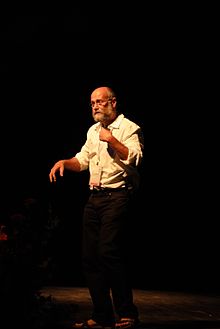
A new book by Yochai Benkler – Internet scholar, Harvard University lecturer, and co-director of the Berkman Center for Internet and Society – sets out to demolish the widely held notion that humans are motivated primarily by narrowly construed self-interest.
Reviewing Benkler's The Penguin and the Leviathan (2011) for The Atlantic, Walter Frick frames the question posed by the book as "Can the Internet bring the beginning of the end of selfishness?", noting the author's use of Wikipedia as the canonical example of a thriving culture of human collaboration that performs a complex task beyond the realms of commerce and government.
Benkler originally discussed the motivations of Wikipedians in his 2006 analysis of informational economics in the Internet age The Wealth of Networks – a pun on Adam Smith's canonical The Wealth of Nations (1776). In The Penguin and the Leviathan he elaborates on this to advance the case that selfishness alone cannot account for what moves economic agents. Frick, hailing Benkler as "one of the preeminent philosophers of the Internet", believes his thesis is something to which most readers are likely to be open to; at the same time, Frick says, Benkler's views are in stark contrast with the tenets of mainstream economics, which have long held to the assumption of rational self-interest.
Benkler's counterposes "the Penguin" (standing for voluntary mass collaboration and named for Tux, the mascot of the open-source operating system Linux) with market-based models ("the Invisible Hand") and the state ("the Leviathan"); in doing so, he calls for the adoption of co-operation rather than competition or coercion as the primary social paradigm. Benkler writes: "If neither the command-control systems dictated by the Leviathan nor the Invisible Hand of the free market can effectively govern society, where shall we turn? Can the Penguin deliver us more robust, working social and economic systems that break us out of this vicious cycle? I believe that he can."
Benkler offers "design levers" – guidelines for aspirant practitioners of co-operation; but Frick finds little in the way of a macroeconomic plan of action in the Penguin model, concluding that translating these design levers into a formal economic model is both daunting and utterly necessary. Perhaps this echoes the maxim that Wikipedia works only in practice, not in theory.
Costly robo-books in the spotlight
In The New York Times, Pagan Kennedy asked Do androids dream of electric authors?, in reference to the expensive print-on-demand books algorithmically assembled from Wikipedia articles by the notorious VDM Publishing. As well as highlighting the ethically murky practices of the publisher, whose modest disclosure of its source material can often go unnoticed by unsuspecting readers and librarians, the piece covered the growing phenomenon of artificial intelligence replacing traditionally human roles such as book editing. The journalist learned from managing director of the firm, Wolfgang Philipp Müller, that they sold 3,000 of these "wiki-books" of freely licensed content annually at an average price of $50.
A sunnier perspective was provided by economist and inventor Philip Parker, who predicted that cheap texts automatically generated by artificial intelligence could play a vital role in literacy efforts, and whose Gates Foundation-funded efforts at producing machine-translated educational content in underserved languages is perhaps more congruent with the Wikimedia movement's goals.
Latest apps capitalise on free Wikipedia

Jimbo on tech, culture and protest
The London Evening Standard picked up on salutatory remarks by Jimmy Wales concerning London's potential to produce great technology leaders. Wales contrasted the "fabulous" cultural wealth of his part-time adopted homeland, and specifically its GLAM sector, with the "boring" Silicon Valley, while criticising Britons for "an excessive willingness to complain and knock things that aren't that bad". The Belfast Telegraph also seized on Wales' remarks, positing the cultural strength of its own city as potentially sufficient to attract the dynamic entrepreneurial spirit. At a press conference to promote London's Tech Entrepreneur Week in December, Sky News reported the self-professed libertarian's sympathy with Occupy London protestors' anger at corporate welfare over what he characterised as abuse of political influence by corporations to induce favourable state intervention. Sky also noted the Internet entrepreneur's prediction that the Net-assisted Arab Spring uprisings – which inspired the Occupy movement – had a long future, as well as his optimism for budding start-ups in pointing out that Wikipedia was "a child of the dot com crash" and that "[o]ne of the reasons we were so innovative in terms of letting the community control things is that I had not money to hire anyone". Elsewhere, Trinity College Dublin's The University Times announced Wales' imminent induction as an honorary member of the university's prestigious University Philosophical Society in November.
In brief
He was first apprenticed to a china dealer at Rotherhithe, but, finding that business too irksome, he left both his master and his home, and went to the Potteries, where he found some employment as a china painter. Finding this too monotonous, he came to London, and commenced a life of great privations and hard efforts to study the fine arts. It is said that at this period of his life he seriously injured his health by trying to live for a year on nothing else but potatoes and water.
- Zombified Britannica saluted: At Big Think, Austin Allen sings the praises of "Antique Wikipedia Entries" incorporated largely unchanged from the out-of-copyright 1911 Encyclopaedia Britannica (see list), hailing the anachronistically romantic tone of the century-old text.
- Irate rugby fans vandalize their targets: Disgruntled by a decision of referee Alain Rolland to send off the Welsh captain Sam Warburton in the semi-finals of the 2011 Rugby World Cup and the resulting loss by Wales to France in a final score of 9-8, fans took out their frustration by vandalizing Rolland's Wikipedia entry. The Telegraph took note of the changes on the page, which was eventually fully protected. In a sub-section titled, "Big defence for Quade's wiki", The Sydney Morning Herald took a jibe at fans of the All Blacks (who bested Australia to earn a place against France in the final), calling on registered Wikipedians to edit Wallabies player Quade Cooper's semi-protected entry "to reflect that Cooper was cleared of any wrongdoing by a tribunal".
- International relations student scheme a dramatic success: In an article on the integration of technology and social media into international relations curricula, The Christian Science Monitor described the use of Wikipedia by assistant professor of anthropology Rochelle Davis for her Introduction to Study of the Arab World course at Georgetown University's School of Foreign Service. In a fall 2010 project facilitated by the Wikimedia Foundation's Public Policy Initiative, students created new articles in the subject area on topics until then uncovered by the encyclopaedia. The article conveyed the skepticism towards Wikipedia of the students, who had witnessed the turbulent rise of the site during their university years, and as Davis's modest hopes of the project being a public literature review, before revealing the dramatic success of the scheme, which had significant reader impact (including 5,000+ daily views of the student-authored National Democratic Party (Egypt) article at the height of the Egyptian Revolution) and which Davis said resulted in the greatest research papers she had ever seen at the university.
- Seigenthaler speaks out: Vanderbilt News announced the imminent appearance of John Seigenthaler, who was notoriously the victim of malicious editing of his Wikipedia biography in 2005, at Vanderbilt University. The journalist and publisher, described as "a nationally recognized advocate for the First Amendment also known for his criticism of Internet vandals who post false information on user-created sites like Wikipedia", is to give a speech entitled “Wikipedia, WikiLeaks and Wiccans: Historical Accuracy Online” in the university's Central Library on October 21st.
Reader comments
History in your neighborhood: WikiProject NRHP
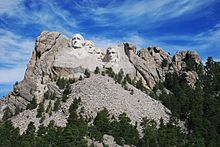
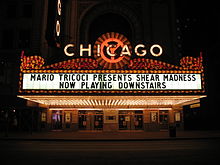


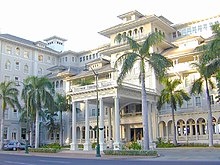
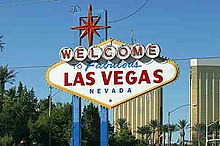









Today, WikiProject National Register of Historic Places celebrates its fifth birthday. The project was founded by Ebyabe to improve Wikipedia's coverage of listings on the National Register of Historic Places in the United States. WikiProject NRHP offers a variety of resources, maintains a style guide, and operates task forces on historic districts and buildings designed by Frank Lloyd Wright. In addition to Ebyabe, we interviewed IvoShandor, Dudemanfellabra, Smallbones, Daniel Case, 25or6to4, Nyttend, Teemu08, and Orlady.
What motivated you to join WikiProject National Register of Historic Places? How many NRHP sites have you visited?
- IvoShandor: I joined the project for much the same reason I suspect many people joined. My reason was it was an easy way for me to participate in WP early on, when I knew little about the 'pedia and the rules and regulations governing it. It was the local angle that mainly attracted me, it was a way for me to expand local coverage of my region on Wikipedia, there are so many NRHP sites that almost every town and city with more than 3,000 people has at least one site. As far as sites visited, I stopped counting, it's in the hundreds. I now live in Chicago and the NRHP sites in this city are overwhelming, there are so many that sometimes I don't even know that I am at an NRHP site when I am at one. One thing that I, and other users (such as Ebyabe) enjoy doing is traveling around on NRHP tours to photograph and see sites. I have visited almost every county north of of Springfield, Illinois to do just that and have contributed over 1500 images to Wikimedia Commons. I now regularly journey around Chicago to do the same, though today I contribute far fewer images.
- Dudemanfellabra: When I originally began editing articles on Wikipedia, I had no intention of ever joining WP:NRHP, and frankly I had never even heard of the National Register of Historic Places. Like many people who are just starting out on Wikipedia, I restricted to myself to things of which I had local knowledge. I began by editing the Meridian, Mississippi article (my hometown), and then I branched out into several articles about locations in the city and surrounding area. When I added a picture to Highland Park Dentzel Carousel and Shelter Building, a National Historic Landmark, that drew the attention of a few members of the project, and I was guided into the project very quickly and effortlessly. Since then I have written articles for many of the NRHP listings in Meridian, as well as a few articles outside of the area. I have visited probably about 50 NRHP listings and photographed them.
- Smallbones: I edited for 2 years before finding my local "county list" National Register of Historic Places listings in Delaware County, Pennsylvania. I immediately loved it: everybody could see the list and see the name, address and coordinates of the main local historical places. The only thing missing was photos - big empty spaces on the list. So, with zero photographic experience, I figured I could snap the 80 or so photos needed without too many problems. I managed to get most of the needed photos in the county. I also learned enough so my photos got to the "passable" level fairly quickly. Sometimes, I think they even get to a "good" level now (can I show one? File:Bridgeton Presby.JPG). It's a treasure hunt tracking down these sites. Folks at WT:NRHP helped get me going. In short it's become addictive. I've filled in 1415 of those empty spaces in the county lists in 3 years. And probably visited another 100 or so sites that already had pix.
- Daniel Case In my pre-wiki life, I used to be a reporter for a local weekly newspaper here in the Hudson Valley. One of my jobs was to write one feature a week on a local landmark in the Newburgh, NY, area. These included things like the Balmville Tree and the Silas Gardner House. I stumbled on the article for the former in early 2006. That led to the project and the county lists. I instantly realized there was something I could contribute, and WP:NRHP has become the biggest aspect of my wikilife since then. I have photographed and written about listings in eight states and gotten very conversant in the NRHP and how it works.
- Ebyabe: Having started the project, let me recount it's genesis, to the best of my memory. I was stubbing Florida State Parks articles, and noticed several were also on the NRHP. I've always had an interest in history, but wasn't really aware of the NRHP. Once I learned more, I thought I'd de-redlink all the Florida NRHP pages. After creating stubs for the sites, or maybe towards the end of that period, it was suggested that a project related to the NRHP might be a good idea. I thought, "Why not? I never imagined it would grow to the extent it has. After I started the project, I made a personal goal to visit and photograph all the NRHP sites in Florida. I modified it to accessible sites, as some are protected archaeological sites, or underwater, or otherwise hard to get to. The goal is mostly accomplished goal, about 90% done. I've also visited sites in Georgia. My current total is 1,576, with about a dozen from before the project started.
- 25or6to4: I only originally started with the project mainly for technical reasons; to update lists with new listings, convert tables, make maps, correcting site locations, etc. But going through the lists, I realized just how many sites I've driven past (or even atop of!), but never realized just how historic they were. Or I would be traveling on vacation and come to a place that had the ever-popular NRHP plaque, and would wonder just how the site fit into the local history. So now anytime I go on vacation, I'm investigating sites ahead of time so I can bring information back to share with WP and everyone that might not get to see this history, or won't know of the history otherwise.
- Nyttend: Almost immediately upon joining Wikipedia, I began adding photographs: rural western Ohio, where I grew up, was severely underillustrated, and my camera was an easier way to add content than researching and adding text. Two years later, while working on a summer job in Pittsburgh, I found National Register of Historic Places listings in Pittsburgh, Pennsylvania and observed that there were multiple unphotographed spots near me; project members encouraged me to add them to the list. I soon started adding photos for other spots and adding tables (at that point, we were in the middle of moving from bulleted lists to comprehensive tables); I didn't start writing NR articles or join the project until well afterward. Since I started counting in 2008, I've visited 2,447 sites, including over 1,100 in Ohio and just about 50% of the ones in Indiana.
- Teemu08:: I first became aware of the NRHP in 2007. It was the heyday of portals and after helping to bring the alternative rock portal to featured status, I decided to do a similar one for my home-state of Illinois. As I filled up Portal:Illinois with information, I realized that I needed DYK hooks. I found that almost all of the recent Illinois-related DYKs were for historic sites across the state. Later that month, I dabbled with creating an Illinois NRHP DYK of my own, but it never came to fruition. In the summer of 2010, I decided to renew my efforts with the project. Shortly thereafter, I discovered that NRHP nomination forms were freely available online, giving me enough data to fill in an entire county's worth of sites. I enjoyed learning about local history and the prospect of educating others on it. Soon thereafter, I started taking pictures both for a personal collection and to supplement Wikipedia. Since August 2010, I have visited 284 sites on the National Register of Historic Places.
The project turned five years old this month. What is the secret to the project's longevity? How has the project changed in those five years?
- Dudemanfellabra: Well, I didn't join the project (or the encyclopedia) until 2008, so most of the groundwork was already laid out before I got involved. I have noticed over the years, though, that the project has a very large scope, largely because of the register itself, so pretty much anyone interested in the history of their local area can help out. There has always been a core group of editors focused on nation-wide standards such as infoboxes, naming conventions, disambiguation, assessment, etc., but it is my observation that most people in the project tend to stick to writing articles about listings in their geographical regions (e.g. I usually stick to Meridian, MS articles), specific types of buildings (some users write only about Masonic buildings, etc.), or basically whatever it is that they are interested in. Everyone is pretty much able to do as they please, and there is a niche for nearly any type of editor. Yes there have been spats of argument among members of the project that might bring in comments from the normally silent majority of our members, but in the end, people simply return to their niches and life goes on. I believe it is this freedom that allows so many people to contribute positively to the project and thus will keep it going strong for many years to come.
- Smallbones: It's definitely the diversity and freedom within the project. Different editors do their own things and get help from others. It's not just East Coast, but also Detroit and Nebraska, Oregon, Denver, etc. It's not just local history people but also folks interested in architecture, public art, museums, railway locomotives, ships, churches, cemeteries, bridges and canals, parks, biography, military history, and more. Some people concentrate on photography, others take care of the list maintenance, others create many "good stubs," some love doing DYKs, and a few just seem to aim for FAs. And some try for it all.
- Daniel Case. They're both right. It's the local connection, and the scope.
- Ebyabe: I'd say the project's success lies in it's niche-ness. One might also call it diversity. The scope of the project is so large that almost anyone can find an area of interest that's covered by it. I like to think we're a welcoming project, where people can share information and help each other out with problems. Sometimes things can get a bit contentious, but I doubt that's unique to our project. That's just human nature. I think, on a whole, we've learned to work together and on occasion agree to disagree. Change in the last five years? Well, we've gotten bigger. Plus we've engaged in large group drives, like getting articles (at least stubs) for all the National Historic Landmarks.
- Teemu08 I find that a big secret to its success is its goal-orientated nature. Most lists of NRHP by county are filled with a sea of red links. As we write articles, we slowly chip away at the red links until the entire county is filled with quality articles. Likewise, on the picture front, one can set a goal of taking all of the pictures of a particular county. Completing such a list can be a reward in itself.
When we first interviewed the project in 2009, Ebyabe envisioned that the project would eventually create an article for every listing on the NRHP accompanied by a picture. Is this still the project's primary mission? How close have you gotten to reaching that goal? What challenges must be overcome?
- Dudemanfellabra: Yes, that is still the project's primary mission. At the time of this response, it appears that there are almost 34K articles about NRHP listings, as well as around 3K lists of properties. When Ebyabe quoted the number of articles under the project back in 2009, he was probably including dab pages, project pages, redirects, and other pages that aren't actually articles about sites on the register (including those now says we have 41K articles.. more than double of 2009). Since that interview we have started an assessment drive (lately spearheaded by Ebyabe himself) to more accurately portray the number of articles we have and exactly what those articles are, so the numbers we have today are much more accurate. We also have increasingly kept up with what we call "fully illustrated lists" – lists that have an image for every single entry in the table(s). Though we obviously still have not gotten 86K+ articles started, we are steadily making progress. Since Christmas 2010 (about the same time this assessment drive began), we have added about 4K articles. We now have about 40% of the NRHP covered on Wikipedia. Still, a large percentage of the NRHP is uncovered, but the progress we are making is great in my opinion.
- Smallbones: Check back in a few years, we'll get it done!
- Daniel Case. Ask the NPS to take a break so we can catch up :-).
- Ebyabe: I'd say the primary goal is an article for every NRHP, with a recent photo for each one a strong secondary goal. I'm not sure how far we have to go, but it's probably a good way yet. There are currently over 86,000 listings on the NRHP, with more being added every week. It's not a goal that will be achieved in the next few weeks or months. But as long as everyone does their bit to chip away at it, the goal will be eventually achieved.
WikiProject NRHP claims over 150 Wikipedians as members. What has attracted so many people to the project? Has the project employed any interesting recruitment strategies?
- IvoShandor: This is an easy question, I think its the localization of the NRHP. It allows people to contribute to the project in a meaningful way while also building their own, and their fellow citizens', knowledge of local history. And sometimes those contributions are about sites of national importance.
- Dudemanfellabra: As I said in response to Q2 above and as IvoShandor has already pointed out, the fact that the NRHP is so broad in scope has attracted many members to the group. I pointed out above that I have focused on Meridian, Mississippi NRHP listings, and if a city as small as Meridian can have ~40 places listed, pretty much anyone from any corner of the country can have some type of interaction with the NRHP.
- Ebyabe: Really? That many? Wow, I've not looked in a while. The attraction I've mentioned before. The niche-ness. Whether it's a specific topic (planes, trains, automobiles, churches, courthouses, etc) or geographic area (the state you live in, for example), people can find out more about it through the NRHP and the project. And for the wiki-gnomes, there are lists to update and articles to assess and disambiguation pages to create and stuff to organize. The project has something for most Wikipedians, whatever their interest or preferred type of involvement. As far as I know, we've never really tried to recruit anybody. I think when the project started, I posted invites at various other state WikiProjects, but that's about it. I have a lot of NRHP articles on my watchlist, and if I see an unfamiliar user working on a bunch of them, I'll often drop a note on their talk page about the project. It's almost scary to think how large the project would be if we did actively recruit.
- Nyttend: I'm sure that everyone else is right; it's much easier for the average American to contribute to topics in this project's scope than to contribute to topics that are geographically more specialised. The presence of significant amounts of information online also means that non-Americans can contribute relatively easily; for example, there's a German NRHP Wikiproject.
The project has recently begun assigning volunteers to maintain lists of NRHP listings within each state. Are there plans to divide other tasks among members? Have any other projects been successful delegating work to specific members?
- Ebyabe: No, no, it's not assigning members tasks. We have a number of people who do regular maintenance tasks because they want to. For example, I try to keep the Florida NRHP lists updated when new listings are announced. I suggested we make a list to see who's doing what. But only to cover for people who go on wiki-vacation (horrors!), and possibly encourage others to jump in and distribute the load a bit more. It expanded to more of the maintenance tasks. But it's not mandatory. All Wikipedia contributors are volunteers. You can't make anyone do anything. The best you can do is create an environment where people want to contribute. Tell someone, "Maintain such-and-such list" and they'll likely leave. Ask someone, "Could you keep the Idaho list updated regularly, please, if it's not too much trouble?" and you'll get a much more positive response. If they say no, that's fine.
NRHP sites are frequently posted to the front page as Did You Know? articles. What makes NRHP articles such good candidates for DYK? Do you have any tips for creating good DYK hooks? Have you worked on any DYK articles that eventually became Good or Featured Articles?
- IvoShandor: I've had just short of 200 articles appear on the main page in the DYK column (I was once one of the most prolific DYK contributors in my heyday). NRHP sites deal with history and architecture, these types of articles usually lend themselves to DYK quite well because there is almost always something interesting about historic sites that few people realize or know. The key to a good hook for me is to keep it short, and pull out the fact that makes you go "huh, no kidding?" when you are composing the article. If you are surprised by something, chances are others will be too.
- Smallbones: There is almost always good documentation on the sites available and if I see enough sites, I'll fall in love with new one on a regular basis. That's when I shoot for a DYK.
- Daniel Case. I didn't start doing DYKs with my NRHP articles, but they began providing a steady source when I began researching and writing them. When New York put all its application documents online, that pretty much guaranteed that I'd be getting a DYK out of almost every one, as I continue to do today.
- Orlady: I've found that, when sources are available (not always the case), articles about National Register properties are very easy to write – much easier than most other topics I've worked on. The scope of the topic usually is well-defined, the sources are well-organized and they clearly identify the topic's significance, and there seldom are controversies involved with them, so it's easy to get a new article to the point where it meets the minimum DYK criteria. The articles are well-suited to DYK because there often are interesting stories associated with the properties – and most properties are readily accessible to photographers.
- Ebyabe: I can't answer that, since I've never been involved in the DYK process. Yes, I'm saying that I have nothing to say. Only so it doesn't seem like I'm ignoring the question.
- Nyttend: DYK is best suited for articles on somewhat obscure topics (i.e. they're not as likely to have substantial articles already), and the majority of NR-listed properties are little known or totally unknown except by people who live nearby. Because they're well documented but not well known, there's often not enough information to produce a large article; I find it much easier to write a "comprehensive" article on the typical NR-listed property than on something of which more has been written, and if your articles are twice the DYK minimum length instead of ten times it, you're going to be able to produce more DYKs. No tips — many of my new articles or expansions don't go to DYK because I can't find good hooks. I have three GAs about NR-listed properties that were at DYK: Mummy Cave in Wyoming (written with Acroterion), Southworth House (Cleveland, Ohio), and Immaculate Conception Catholic Church (Celina, Ohio).
What are the project's most pressing needs? How can a new member help today?
- Smallbones: We are having a photo contest running from October 21 thru December 4: see Wikipedia:WikiProject National Register of Historic Places/Fall 2011 Photo Contest. Otherwise just get started on articles and photos in your area or area of interests. Just check the state or county lists, e.g. List of RHPs in TX.
- Dudemanfellabra: New members are always welcome to contribute by writing a short article about a site in their hometown or by taking pictures of listings. We have a to-do list that is regularly updated with tasks going on in the project, so anything on there would be helpful. There are several more mechanical tasks such as rating importance or fixing dead links that don't require much actual research but are nonetheless important to the project. One pressing item on the list is focused on the DC area. Wikimania 2012 will be held there, and several members of the project are trying to create articles and take pictures of all NRHP listings in the area.
- Ebyabe: The answer to both questions is WP:NRHPTODO. Or they can ask at the project talk page. They shouldn't fear; we don't bite. Well, maybe nibble a little. :)
- 25or6to4: Personally, getting photos of the sites is a big priority for me. There are a lot of sites around the nation that are disappearing, and once the site is gone, it's very tough to find a historic photo of the site. Look at the number of sites along the East Coast that were lost due to the flooding from Hurricane Irene.
- Nyttend: Definitely the photos. Anyone can write articles from online sources, and print sources are often available, but there's no way that we can get images if we're across the country or on a different continent. Our Nebraska lists are substantially better than those of surrounding states: the numbers of articles are comparable, but Nebraska's lists are better because a Nebraskan who travels a lot has added several hundred images, while we don't have any active photographers in Kansas or the Dakotas.
Next week, we'll rank some iconic WikiProjects. Until then, imagine yourself in the archive.
Reader comments
Brazil's boom-time dreams of naval power: The ed17 explains the background to a new featured topic

Featured topic


The 100th is indeed a notable topic: Minas Geraes-class battleships (nom). It's composed of three featured articles: one on the class itself, and one each on the two ships in the class, Minas Geraes and São Paulo. The class comprised two ships that were intended to be Brazil's first step towards becoming an international power. As part of their colourful history, both ships were at the centre of a major rebellion known as the Revolt of the Lash, a revolt by Afro-Brazilian sailors who were widely discriminated against and abused in the navy.
The nominator, The ed17, is a history student at Northern Michigan University. He is a coordinator of the Military history Project, an online ambassador, and the co-editor of The Bugle. He told The Signpost that work on the component featured articles started in 2009 after a comment by a fellow editor at WikiProject Military History: "there's lots of battleships which don't even have an article at all! ... it's a classic bit of WP:BIAS. You want MILHIST to be a 'quality' encyclopedia – where's the article on the Minas Gerais then?"
Ed says, "he had a good point, so I went and created the article. This snowballed into writing most of the South American dreadnought articles over the next two years – my last was the tie-in article, South American dreadnought race. Sturmvogel 66 wrote the articles on the two ships (Agincourt and Eagle) that were taken over by Britain's Royal Navy."
The Signpost asked Ed why Brazil was such a big player in the naval world of the early 20th century. "Brazil was never a major naval power, but they had grand dreams of becoming one during an economic boom just after the turn of the century. Prominent politicians in the country wanted Brazil to become an international power, and they believed that a powerful navy was an essential in obtaining this goal. The two Minas Geraes-class dreadnoughts, two Bahia-class cruisers, and many smaller ships were ordered, but unfortunately for Brazil, the boom turned into bust in the years before the First World War. Multiple revolutions between 1910 and 1932 didn't help the situation, and nearly all of the ordered warships still formed the core of the Brazilian Navy when the Second World War began three decades later.
"Having said that, if you had been around at the time, you might have seen Brazil as a naval power between 1907 and 1910. It's all about how Brazil's dreadnoughts were perceived. The Minas Geraes class was hailed as the most powerful warship design in the world when construction began in 1907, and newspapers around the world were quick to express astonishment and disbelief that Brazil, far outside the traditional world powers, would be the third country to order one of the new dreadnought designs, a revolutionary concept in warship design which made all existing battleships obsolescent.[A]
"When the Brazilian dreadnoughts came into service in 1910, they were the most advanced warships afloat, meaning they received more newspaper attention. Looking back, given the greater numbers of dreadnoughts being built by other countries, and the start of construction on super-dreadnoughts in the United Kingdom, we can say that the Minas Geraes class was obsolescent by 1910 – but at the time, popular perception was quite different."
- ^ Ed says, "The trend was started by the British with HMS Dreadnought, which mounted three times the number of large guns found on most older pre-dreadnoughts (12 versus 4) and used steam turbines, among other improvements. See Pre-dreadnought battleship#Obsolescence for more information."
Featured picture
One image was promoted from a considerable field of nominations. Please click on "nom" to view a medium-sized image:
Black-browed Albatross (nom; related article), the most widespread and common albatross; its bill is split into seven to nine tiny plates. Colonies are very noisy as they bray to mark their territory, and cackle harshly. The males use their fanned tail in courting displays (created by User:JJ Harrison).
Featured articles



Rochester Castle (nom), a medieval stone building in Kent, England. The nominator, Nev1, says, "This article has something for everyone: blood and violence, intrigue and rebellion, a remarkable building, treasure hunting, and even the ghost of Charles Dickens. Its history dates back to the 11th century, since which Rochester has seen more than its fair share of fighting. The castle was held by the Archbishops of Canterbury and the Kings of England, marking it as exceptionally important. I hope that even if castles don't normally tickle your fancy, this one might; Dickens certainly found it worth his attention." picture above
Conan the Barbarian (1982 film) (nom), a 1982 fantasy film (think "Arnie") about the adventures of the eponymous character in a fictional pre-historic world of dark magic and savagery. The nominator, Jappalang, says "more than a year has gone into researching and writing this article, transforming it from a mass of fan opinions into a piece that befits Wikipedia's policies and guidelines". There were peer reviews by Brianboulton, Wehwalt, Casliber, and David Fuchs. picture at right
Ernie Fletcher (nom) (b. 1952), 60th governor of Kentucky. After a failed attempt to become an astronaut, Fletcher went to medical school and became a doctor and a lay minister. He was elected to the Kentucky House of Representatives, U.S. House of Representatives, and as Governor of Kentucky. He was mentioned as a possible presidential nominee before a hiring scandal derailed his political career. (Acdixon)
Peter Jeffrey (RAAF officer) (nom) (1913–97), a senior officer and fighter ace in the Royal Australian Air Force. Nominator Ian Rose said, "I found him more interesting and admirable as a leader the more I researched him, and I think you will too as you read it." picture at right
Stephen, King of England (nom) (c. 1092/6 – 25 October 1154): nominator Hchc2009 said, "Stephen is a fascinating subject for an article – a war-time leader, who was at one point captured by the enemy until saved through his wife's successes in battle; a devout father who ended up passing over his own son in the succession".
Bharattherium (nom), a mammal that lived in India during the late Cretaceous period, 70–66 million years ago. (Ucucha)
Reader comments
Case requests on ethnic strife and a WikiProject declined, Abortion case stalls but topic bans look to be lightened on amendment

No cases were closed or opened this week, leaving one open. The Arbitration Committee declined two requests for new cases, on Azerbaijan-Armenia-Iran-Turkey, deciding that the existing discretionary sanctions/arbitration enforcement regime is sufficient, and on WikiProject Conservatism, because of a perceived lack of prior dispute resolution; the WikiProject was unsuccessfully nominated for deletion around the same time (see "News and Notes").
It is still possible to submit evidence and proposals in the Abortion case. Nearly 70 kb of text has been contributed, but at the time of writing the last edit to the evidence page[1] was over three weeks ago.
Clarifications and amendments
A request to amend the Digwuren case has been made to allow for editors topic-banned from arbitration enforcement to participate in the Mediation Cabal case Holodomor. Arbitrators were divided as to whether the request ought to have been submitted at the Arbitration Enforcement forum itself, but seemed open to deferring to the judgement of the mediator who submitted the amendment request.
Discussion surrounding a request to amend last year's contentious Climate change case to lift the topic ban on William M. Connolley entered its second week. While arbitrators again appear open to granting some measure of leniency, some sought greater acknowledgement of the rationale of the original decision and the events leading up to it from the topic-banned editor. A motion to lift the climate change topic-ban on William M. Connolley while retaining the prohibition of his editing articles on living people related to the topic area has attracted five support votes, one oppose, and one neutral from the participating Committee members at the time of writing.
Correction
- ^ A previous version of this article erroneously stated that it was the case's workshop page that had not been edited in three weeks.
Reader comments
WMDE renew investment in Toolserver, first offsite backup programme of Wikimedia begun
German Wikimedia chapter vows to improve Toolserver service

Addressing the relatively high number of problems that have affected the Wikimedia Deutschland–run Toolserver over the past month, WMDE software developer Daniel Kinzler has said that the chapter is now "getting a grip on the problem" (toolserver-l mailing list). Blaming the severity of the recent problems on a lack of system admin time, along with the problems this caused in trying to deliver a much-needed expansion in hard-disk space for the server, Kinzler identified a number of positive steps WMDE was now taking to rectify the issue. We quote his six bullet points:
- Sebastian Sooth has taken charge of IT management at WMDE. He's way better at this stuff than me, so that will help.
- We are hiring an interim admin. I hope we'll have the contract finalized by next week.
- We will buy and install more storage. ... Expect this to take at least 8 weeks before we have everything installed.
- Meanwhile, we'll try to assess and fix any other issues that have piled up over the last couple of months.
- In the process, we'll create and improve documentation of the cluster, so it becomes easier for people with access but little knowledge (like myself) to fix things when they break.
- We will run a proper job offer for a paid toolserver admin. The idea is to eventually have two paid (part time) system admins.
Technology commentator MZMcBride welcomed the development, adding that Kinzler's words were "much appreciated. I think we all look forward to a more stable Toolserver in the future". Nonetheless, some may be concerned that the development of an integrated "Wikimedia Labs", whilst undoubtedly able to offer a richer set of features for tool developers, will crowd out the semi-independently run Toolserver in the mid to long term. In April, The Signpost reported how the WMF was backing its Wikimedia Labs project with some $1.5 million, far in excess of the operating costs of the Toolserver.
In brief
Not all fixes may have gone live to WMF sites at the time of writing; some may not be scheduled to go live for many weeks.

In a post on the wikitech-l mailing list, Vice President of the WMF Erik Möller appealed for more people to contribute to the MediaWiki.org resource pool. "If you have a little bit of time to spare, a nice community-building thing would be to feature events more prominently on MediaWiki.org", he wrote.
- First Wikimedia dump mirror in place: It is now possible to download Wikimedia dumps from more than one location; whereas before no list of download sites was offered, now users can select between downloading the dumps from WMF servers or from C3SL, an organisation supporting free software based in Brazil. Many no doubt hope that the arrangement will be the first of many such partnerships, enabling Wikimedia dumps – which include virtually all non-deleted revisions from Wikimedia wikis – to become sufficiently accessible and geographically diverse to survive natural and artificial disasters (wikitech-l mailing list).
- Improved RTL-support highlighted: With the dust settling on the MediaWiki 1.18 deployment, Gerard Meijssen highlighted the practical benefits the deployment has given to users of right-to-left (RTL) languages when it came to the central media repository Wikimedia Commons. In unrelated news, User:Risker thanked developers, system administrators and other helpers for delivering 1.18 relatively smoothly (wikitech-l mailing list).
- Fundraiser bug triage: A bug triage was held to help fix bugs with the current system for accepting donations; nine bugs were looked at, with comments taken on each. The next bug triage is going to be on October 19 and will focus on mobile-related bugs.
- Seven new bot tasks approved: On the English Wikipedia, seven bot tasks were approved for action this week, including a bot to maintain "indefinitely blocked" categories, disambiguation-needs-cleanup tags, and automate handling of Today's Featured Article. Still open are a number of requests, including for a simple anti-vandalism bot and a bot to maintain usage of the
{{dablinks}}template. Editors are encouraged to comment on proposals. - SVG image rendering improved: With the resolution of bug #24000, Wikimedia's version of rsvg has been upgraded; this is a library used for converting browser-dependent SVG files into browser-independent PNG files before display. Attempts to use CSS in SVG files now work much better than before. In other news, a brief post-1.18 bug (#31383) involving the GlobalUsage extension was fixed.
Reader comments

